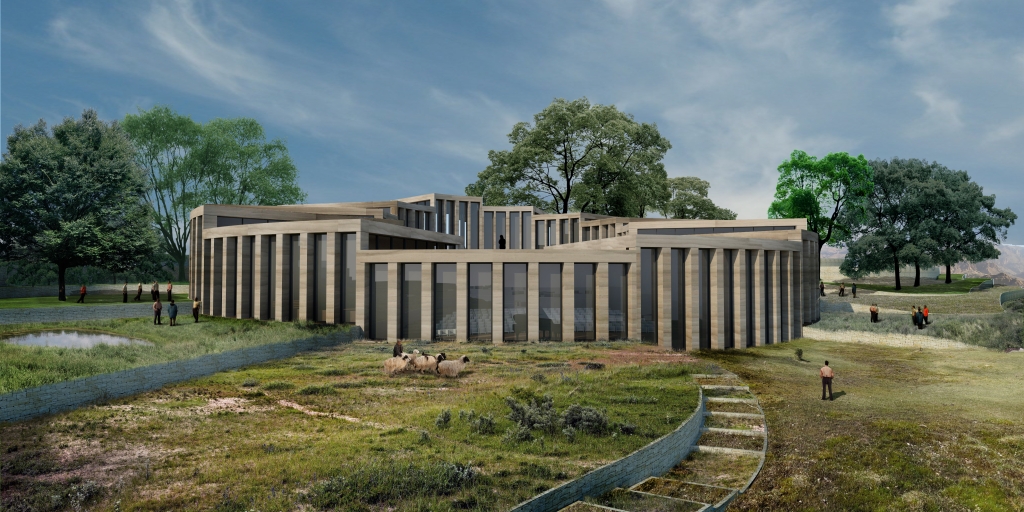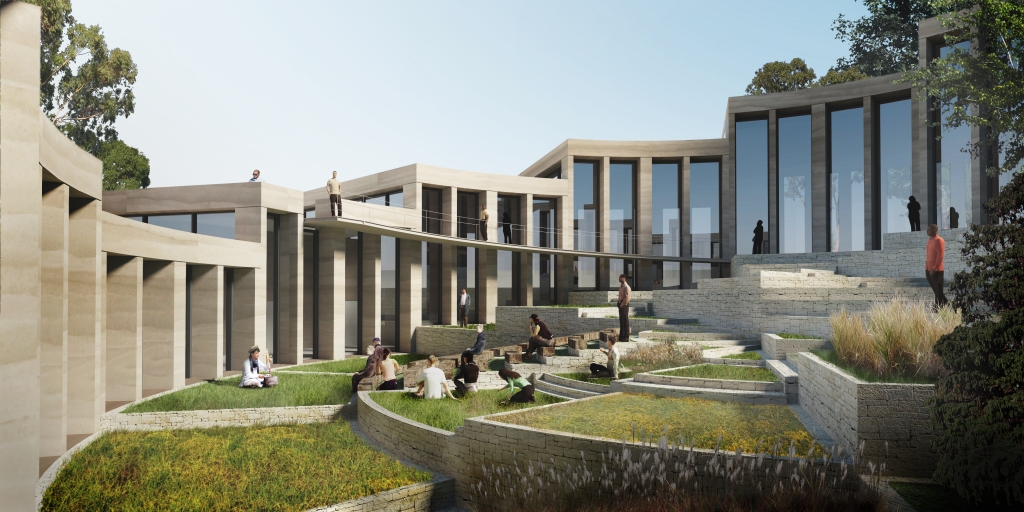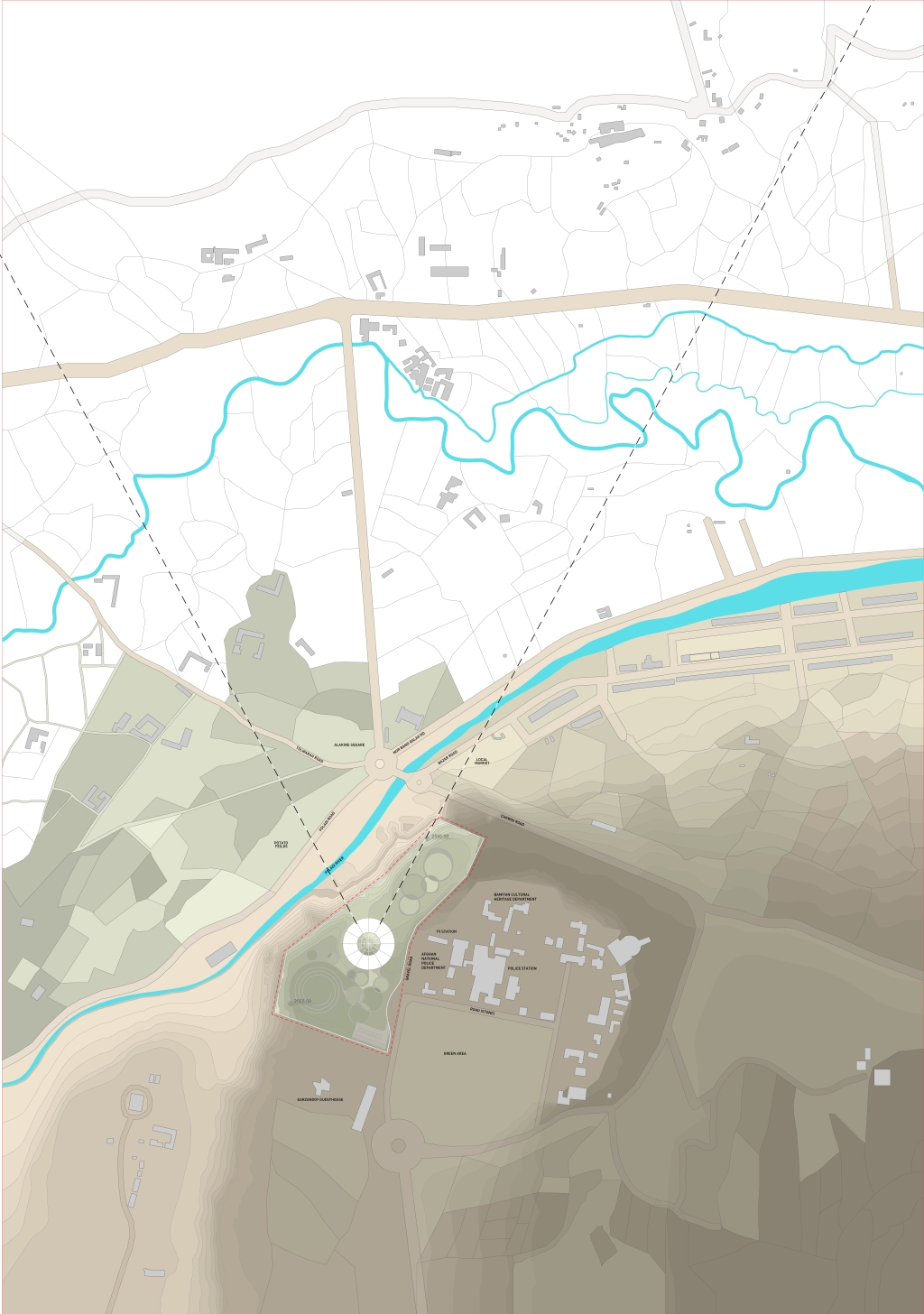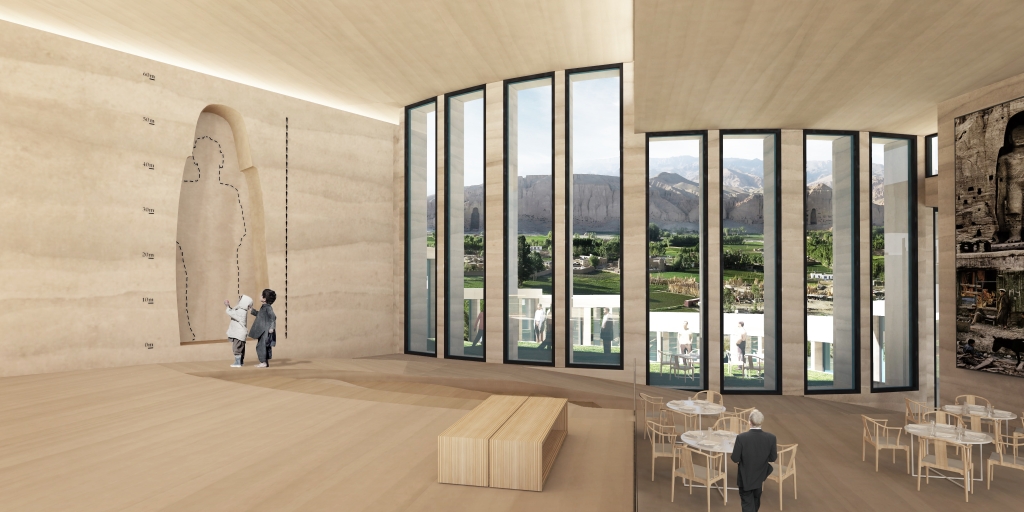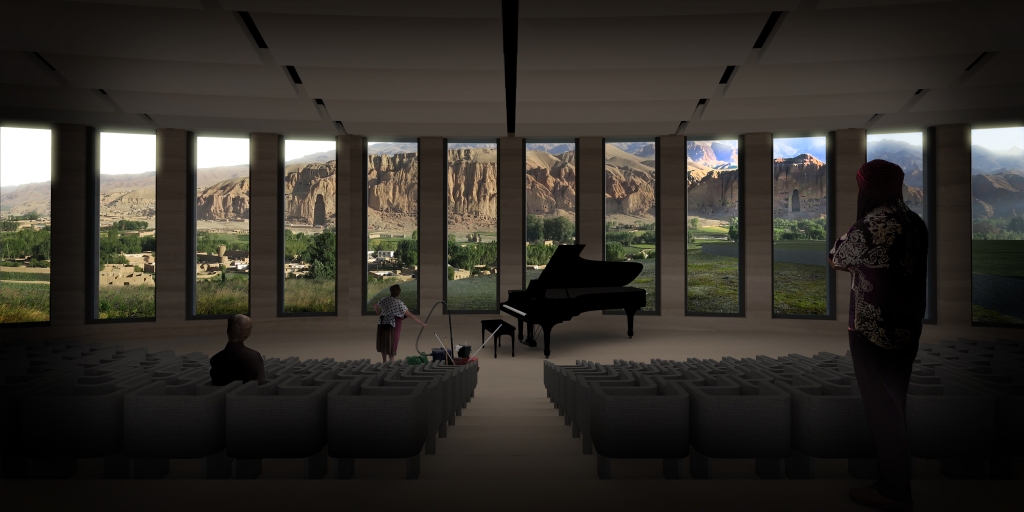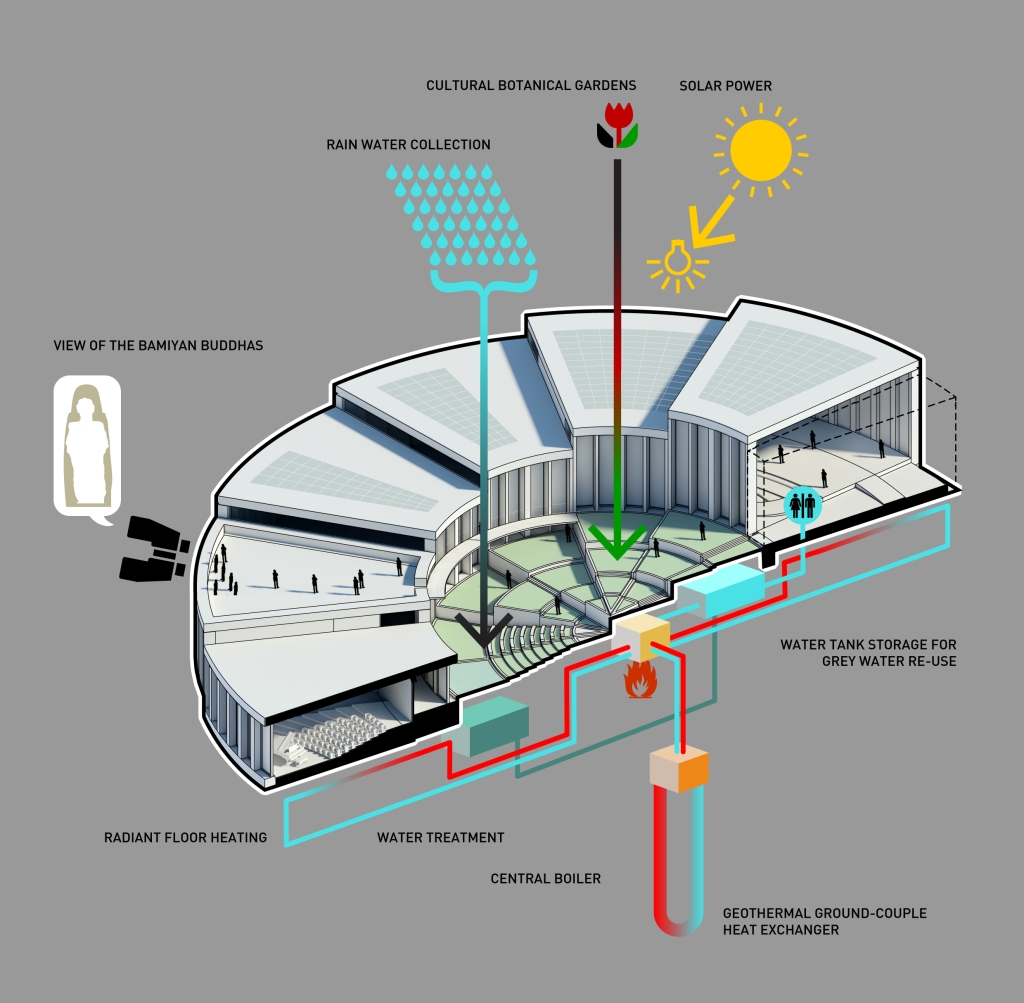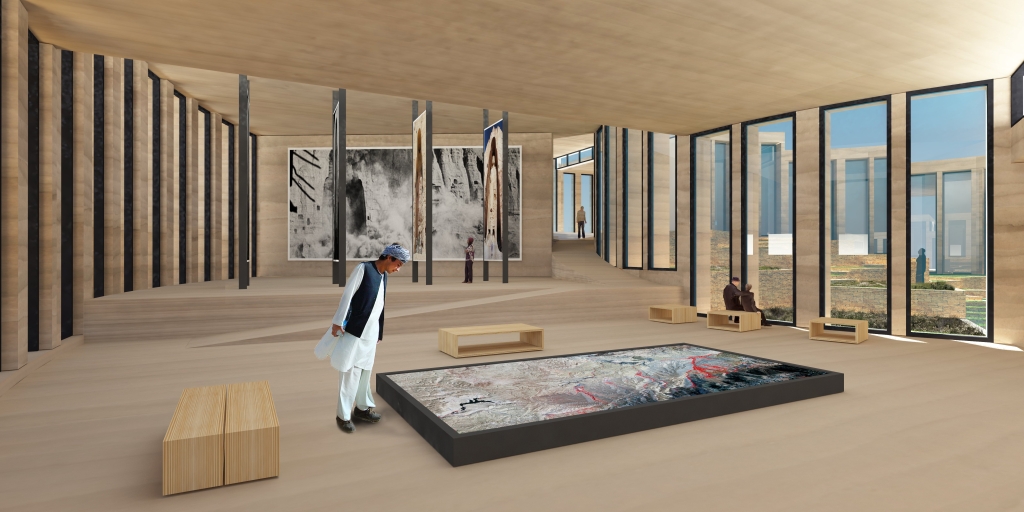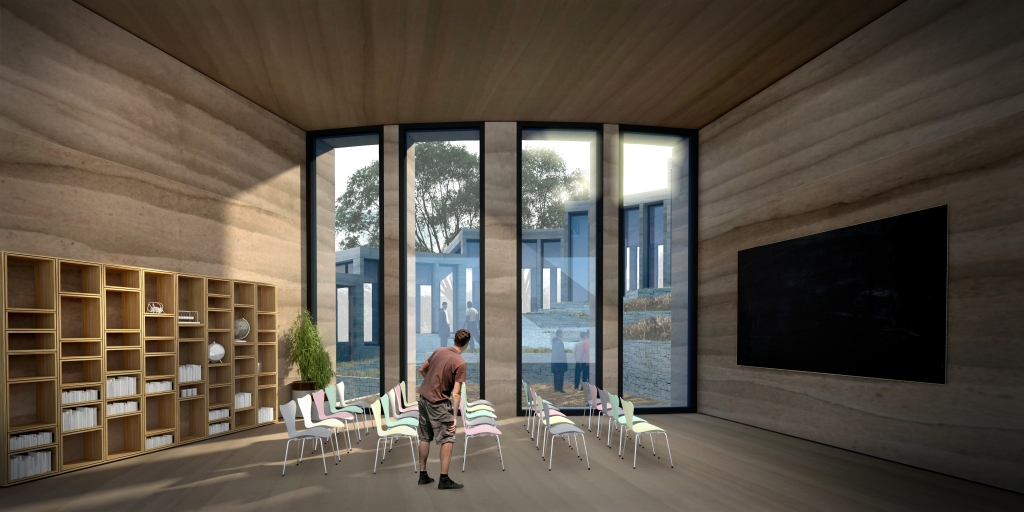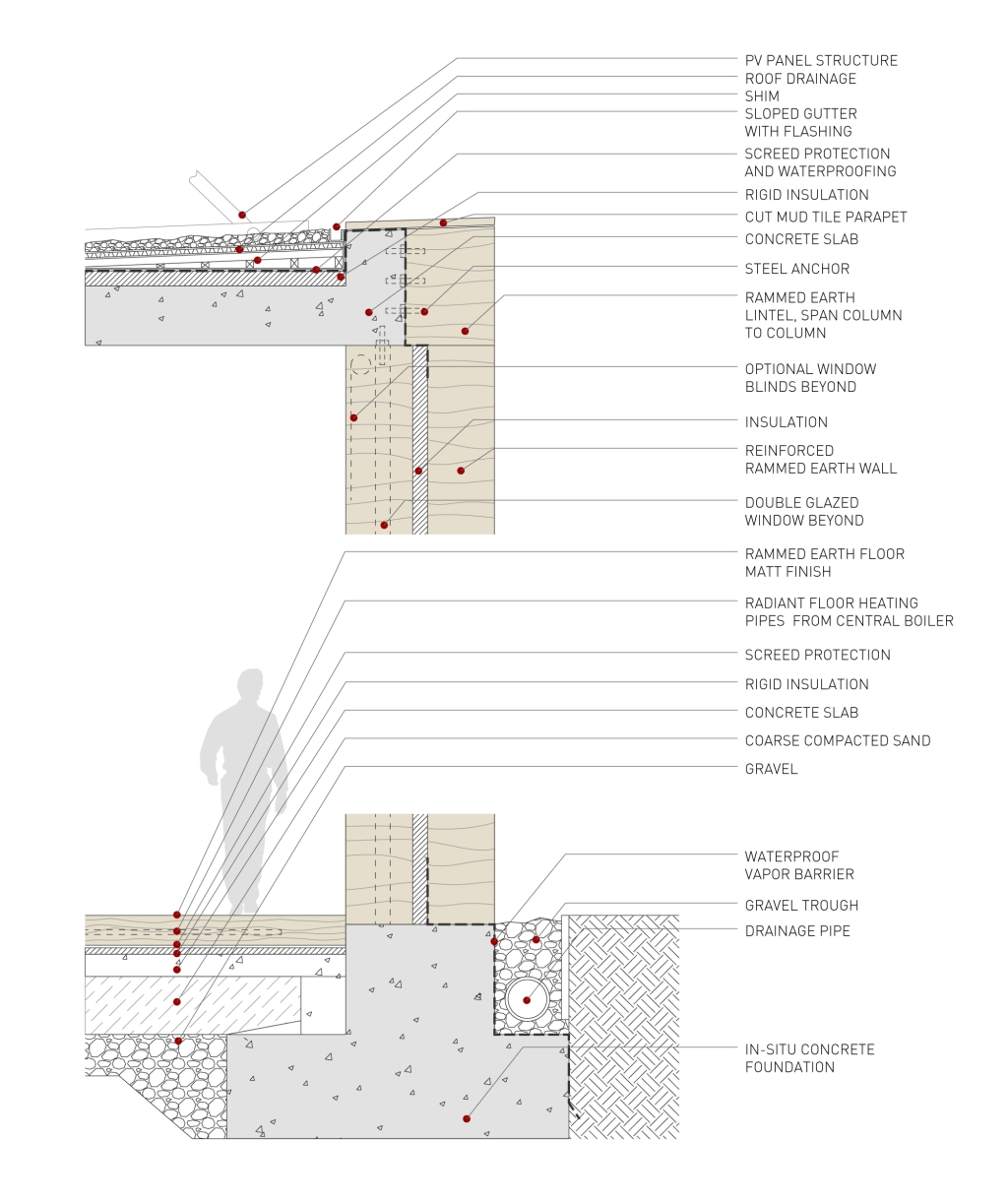Bamiyan Cultural Centre
Bamiyan Cultural Centre
The Bamiyan Cultural Centre will be a new and significant addition to the difficult task of rebuilding the nation of Afghanistan. The site is important, not just because of its proximity to the tragic remains of some exceptional monuments, but also because its location, which, for more than a thousand years, has been a global intersection of people from across the continent trading along the Silk Road. Hence, the objective is to create a place of cultural exchange where the Valley serves as its backdrop, and the cultural center its stage. To us this means the building must perform two major functions. One, as a place of gathering, of seeing one another, for local inhabitants as well as travelers from afar. Two, it must intelligently frame the view of the Valley for its visitors. In other words, how can a design be inward looking and outward looking at the same time?

To begin, we must first bring members of the community together. Taking a cue from the surrounding building sizes, required rooms and programs are arranged into a circle so that they form a courtyard and look into one another. This is not unlike the traditional Caravanserai shelter inns that were once prominent during the Silk Road times, where the residents were treated to an intimate, domestic space where they were free to trade and interact with each other away from the vast and harsh terrain beyond the shelter walls. In this modern incarnation, the courtyard promotes visual connectivity and maximum interaction between the various types of users, both public and private, while ensuring that the necessary functions meet security and privacy concerns.

Furthermore, the volumes arranged as a circle offers an extra benefit of keeping the building as compact as possible, which in turn minimizes the total exposed surface area to extreme weather conditions. All functions have access to the shared courtyard area, which doubles as activity spaces and shortcut routes, as well as outdoor tea spaces within the lush botanical garden populated by species from around Afghanistan. However, in order to truly create a direct visual connection between the Valley and the people in the cultural center, we propose to step the building down along the natural slope of the site. This simple move has a stunning impact: now every single room in the building is offered a view of the Valley. Compared to a flat courtyard building, they will no longer be blocked by the other rooms across the courtyard. Instead, the terraced volumes frame the view of the Valley, especially as seen by visitors as they enter the lobby reception. Visitors can continue to access the building in a normal, secure, manner through the handicap-accessible corridors that loop the building. At various points in the building, visitors will be able to see the Valley framed in different angles and compositions. This experience climaxes in the auditorium, where performances take place with a majestic view of the Valley as a backdrop. This modern facility has options for automatic blinds if needed, as well as immediate access to the landscaped exterior after performances, thus completing the experience of the Cultural Centre.
Despite the contemporary approach to design, this building pays strong attention to the historical context of the World Heritage site. In addition to the view orientation toward the Valley, it is also inspired by the network of paths that agglomerate around the buildings in the surrounding area where they appear to emerge from the intersections of paths. Thus, the Bamiyan Cultural Centre is a modern interpretation of the Bamiyan landscape that not only blends into its context and topography to create a sensitive visual impact in the Valley, but also signals a positive future for Bamiyan and Afghanistan in the form of mutual exchanges and the cultivation of community.
-
Client
UNESCO, Ministry of Information and Culture of Afghanistan
-
Year:
2014
-
Size:
2,220 m2
-
Status:
Competition
-
Location:
Bamiyan Valley, Afghanistan
Share project
